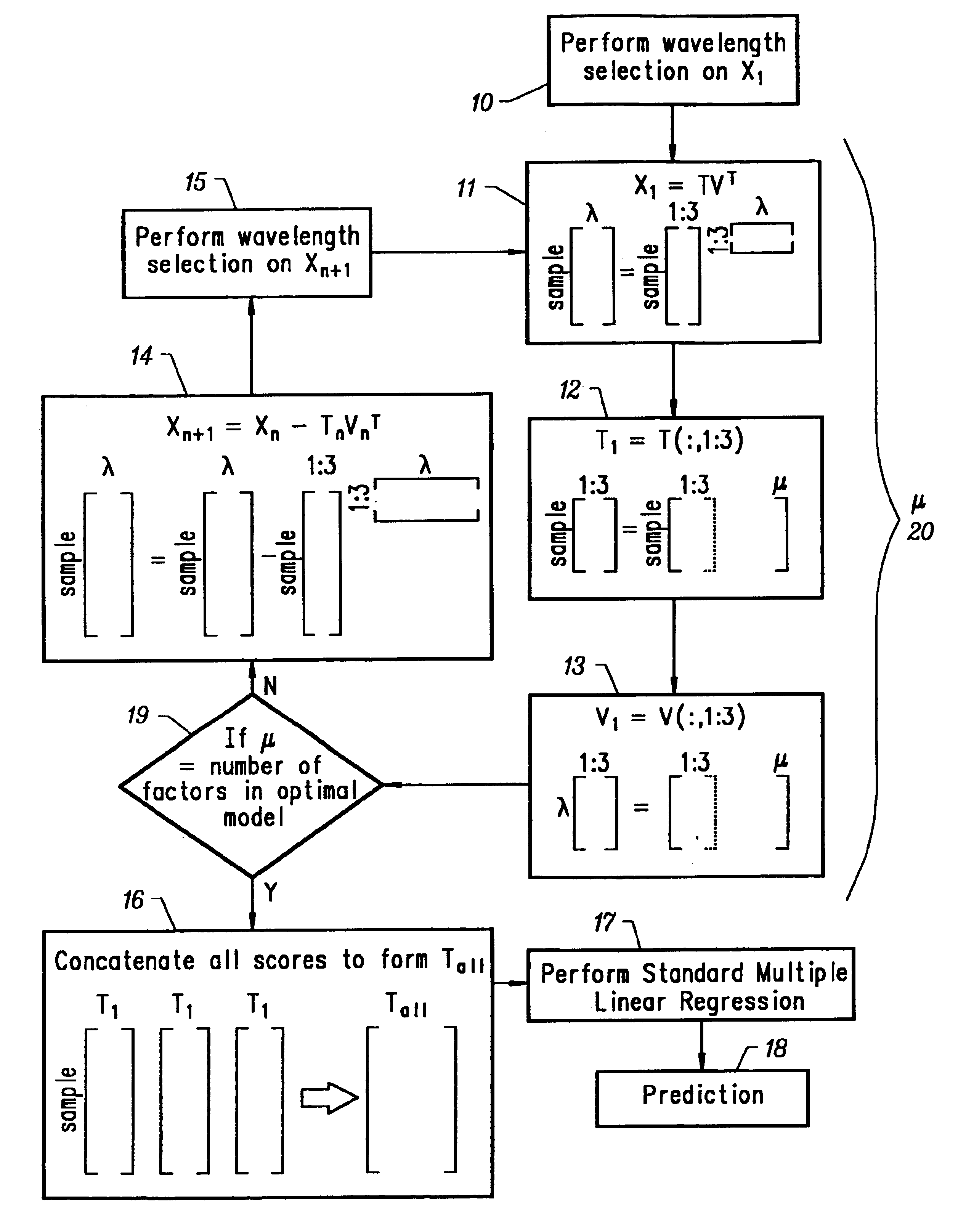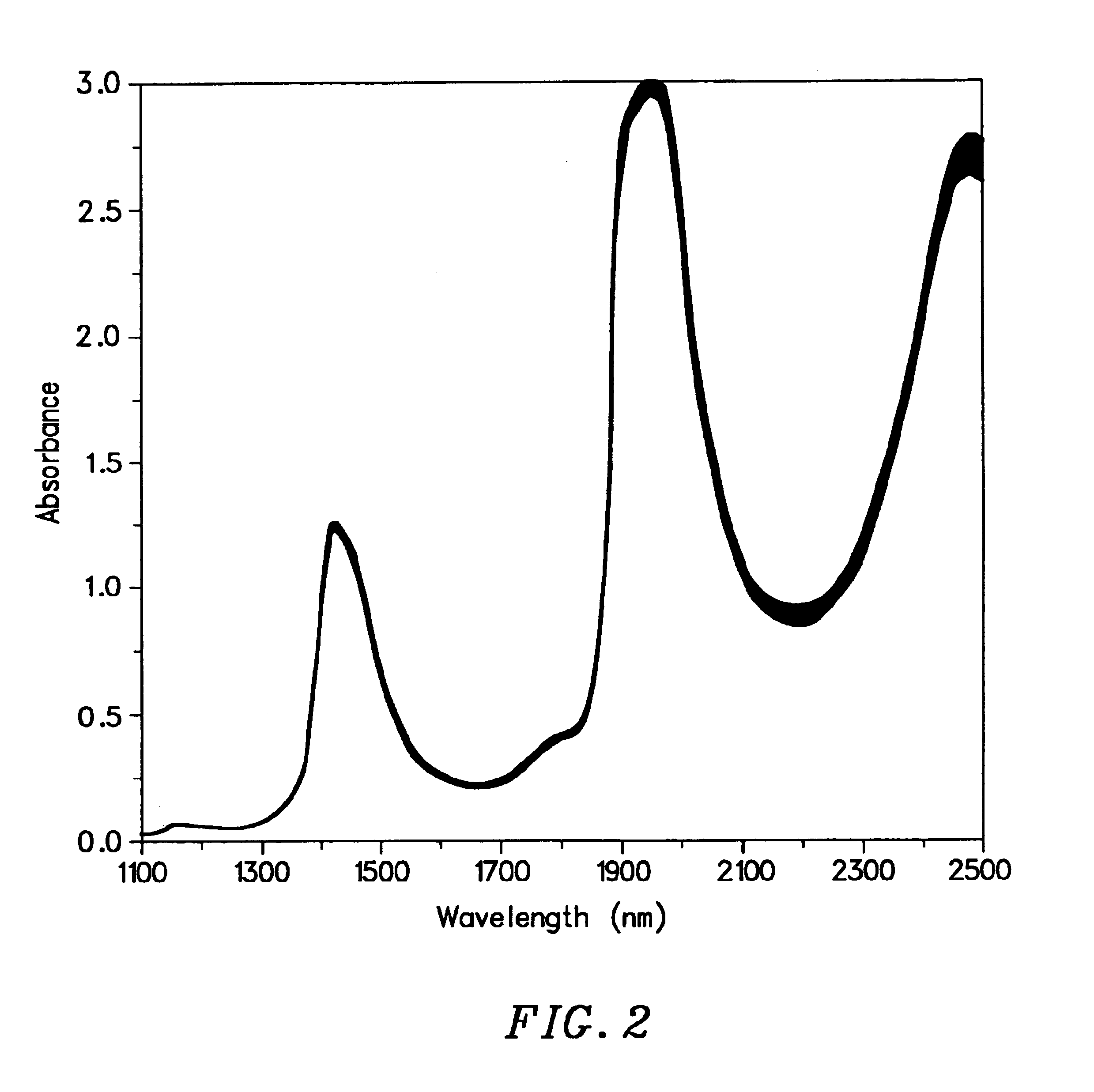Combinative multivariate calibration that enhances prediction ability through removal of over-modeled regions
a multi-variate calibration and prediction capability technology, applied in the field of multi-variate analysis of spectral signals, can solve the problems of erroneous prediction of subsequent prediction matrices, noise in the data may be incorporated into the model, and the disadvantage of multi-variate techniques such as principal component regression and partial least squares regression
- Summary
- Abstract
- Description
- Claims
- Application Information
AI Technical Summary
Problems solved by technology
Method used
Image
Examples
example
Phantom Serum Spectra Generation: Near-IR absorbance spectra of water, albumin, triglycerides, cholesterol, glucose and urea with a concentration of 1 g / dL at 37.0° C. and a 1 mm pathlength were generated from spectra collected on a NICOLET 860 IR Spectrometer, supplied by Nicolet Instrument Corporation of Madison Wis., in transmission mode with subsequent multivariate curve resolution analysis. The pure component spectra were used to generate phantom serum spectra by additive additions of the absorbances of the constituent components, where the concentration of each constituent was randomly selected from the concentration ranges in Table 1, below. Noise proportional to the resulting spectral absorbance at each wavelength was then added, with the standard deviation of the added noise being a percentage of the total absorbance; thus yielding spectra with increased noise levels at higher absorbance levels.
TABLE 1Concentration Range of Constituents Used in Serum Phantom.ConcentrationCo...
PUM
 Login to View More
Login to View More Abstract
Description
Claims
Application Information
 Login to View More
Login to View More - R&D
- Intellectual Property
- Life Sciences
- Materials
- Tech Scout
- Unparalleled Data Quality
- Higher Quality Content
- 60% Fewer Hallucinations
Browse by: Latest US Patents, China's latest patents, Technical Efficacy Thesaurus, Application Domain, Technology Topic, Popular Technical Reports.
© 2025 PatSnap. All rights reserved.Legal|Privacy policy|Modern Slavery Act Transparency Statement|Sitemap|About US| Contact US: help@patsnap.com



